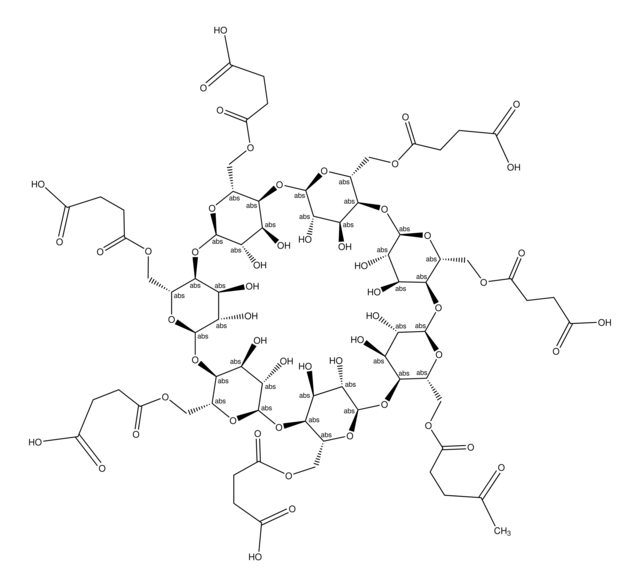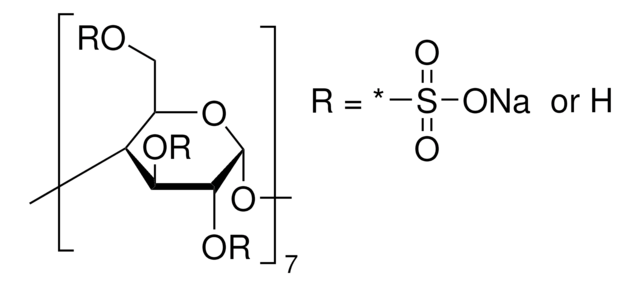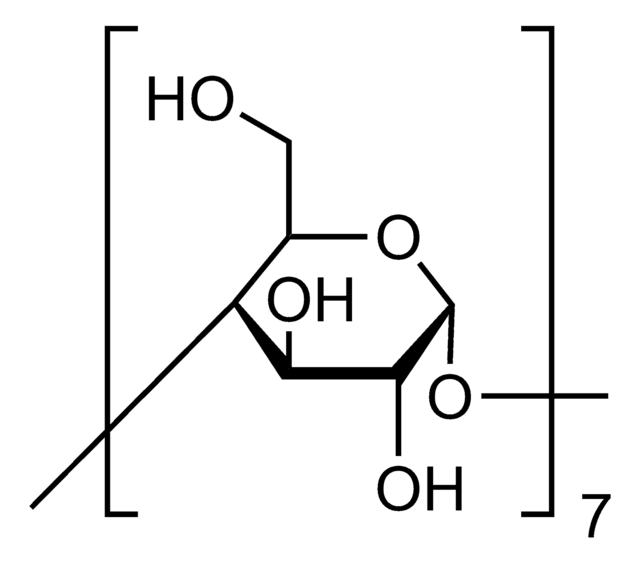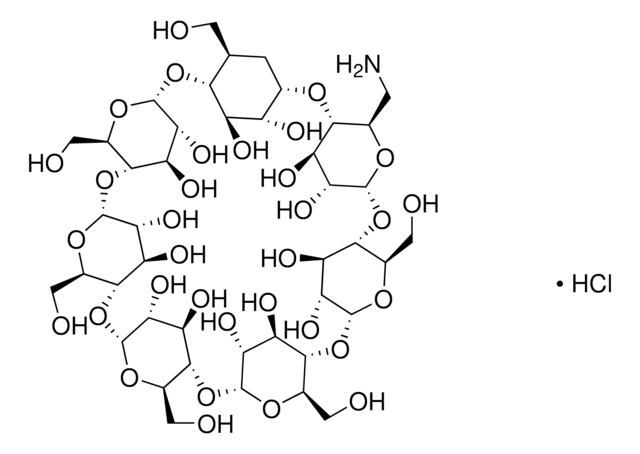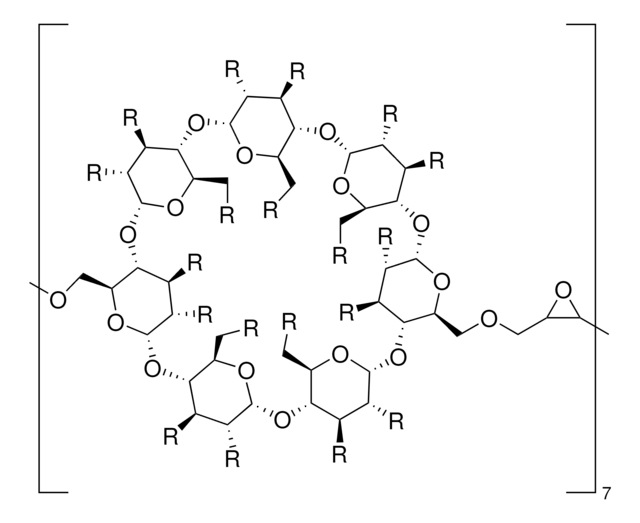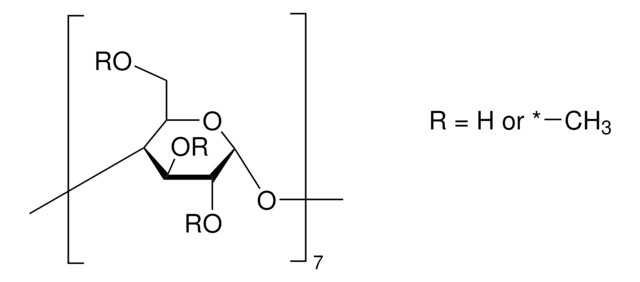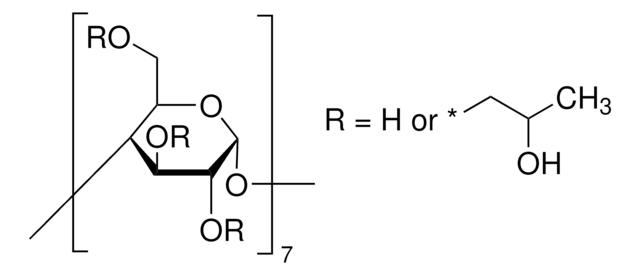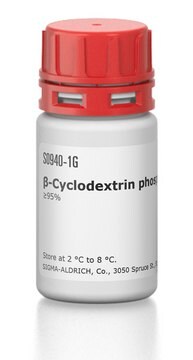21906
Carboxymethyl-β-cyclodextrin sodium salt
Synonym(s):
Sodium CM-β-Cyclodextrin
About This Item
Recommended Products
form
solid
Quality Level
impurities
10% water
mp
~245 °C (dec.)
solubility
H2O: 50 mg/mL, clear to slightly hazy, colorless
SMILES string
O[C@H]1[C@H](O)[C@@H]2O[C@H]3O[C@H](COCC(O)=O)[C@@H](O[C@H]4O[C@H](COCC(O)=O)[C@@H](O[C@H]5O[C@H](COCC(O)=O)[C@@H](O[C@H]6O[C@H](COCC(O)=O)[C@@H](O[C@H]7O[C@H](COCC(O)=O)[C@@H](O[C@H]8O[C@H](COCC(O)=O)[C@@H](O[C@H]1O[C@@H]2COCC(O)=O)[C@@H](O)[C@@H]8O)[C@@H](O)[C@@H]7O)[C@@H](O)[C@@H]6O)[C@@H](O)[C@@H]5O)[C@@H](O)[C@@H]4O)[C@@H](O)[C@@H]3O
InChI
1S/C56H84O49/c57-22(58)8-85-1-15-43-29(71)36(78)50(92-15)100-44-16(2-86-9-23(59)60)94-52(38(80)31(44)73)102-46-18(4-88-11-25(63)64)96-54(40(82)33(46)75)104-48-20(6-90-13-27(67)68)98-56(42(84)35(48)77)105-49-21(7-91-14-28(69)70)97-55(41(83)34(49)76)103-47-19(5-89-12-26(65)66)95-53(39(81)32(47)74)101-45-17(3-87-10-24(61)62)93-51(99-43)37(79)30(45)72/h15-21,29-56,71-84H,1-14H2,(H,57,58)(H,59,60)(H,61,62)(H,63,64)(H,65,66)(H,67,68)(H,69,70)/t15-,16-,17-,18-,19-,20-,21-,29+,30+,31+,32+,33+,34+,35+,36+,37+,38+,39+,40+,41+,42+,43-,44-,45-,46-,47-,48-,49-,50-,51-,52-,53-,54-,55-,56-/m1/s1
InChI key
WROHVVIPQXODQM-LYSKQWNXSA-N
General description
Application
Carboxymethyl-β-cyclodextrin (CMBCD) is used in the development of recognition and separation technologies to resolve enantiomers based on chiral properties and size. Carboxymethyl-β-cyclodextrin is used in chiral selection and separation by capillary electrophoresis. Carboxymethyl-β-cyclodextrin is used in the development of drug delivery vehicles such as nanocarriers and as a nucleic acid transfection agent.
Analysis Note
Other Notes
Storage Class Code
11 - Combustible Solids
WGK
WGK 3
Flash Point(F)
Not applicable
Flash Point(C)
Not applicable
Personal Protective Equipment
Choose from one of the most recent versions:
Already Own This Product?
Find documentation for the products that you have recently purchased in the Document Library.
Our team of scientists has experience in all areas of research including Life Science, Material Science, Chemical Synthesis, Chromatography, Analytical and many others.
Contact Technical Service